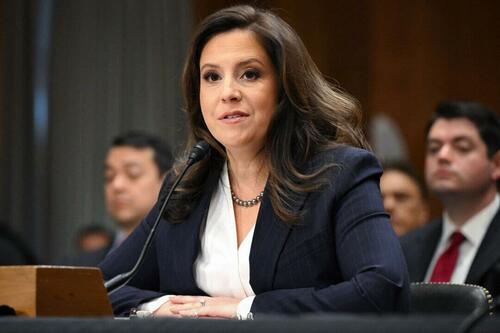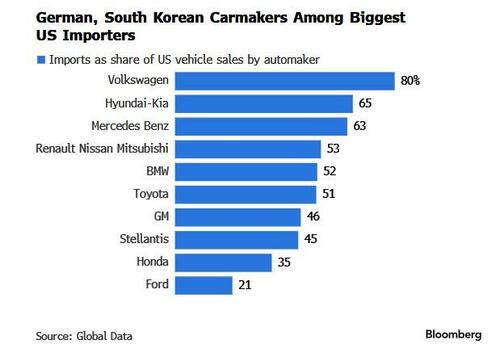White House Withdraws Stefanik Nomination To UN Ambassador
White House Withdraws Stefanik Nomination To UN Ambassador
Authored by Jackson Richman via The Epoch Times (emphasis ours),
President Donald Trump has withdrawn the nomination of Rep. Elise Stefanik (R-N.Y.) to be U.S. ambassador to the United Nations.
U.S. Rep. Elise Stefanik (R-N.Y.) testifies before the Senate Foreign Relations Committee on her nomination to be ambassador to the United Nations, on Capitol Hill in Washington on Jan. 21, 2025. Saul Loeb/AFP via Getty Images
Trump announced the move on Truth Social on March 27, citing the narrow majority the GOP has in the House.
“As we advance our America First Agenda, it is essential that we maintain EVERY Republican Seat in Congress. We must be unified to accomplish our Mission, and Elise Stefanik has been a vital part of our efforts from the very beginning,” he wrote.
“I have asked Elise, as one of my biggest Allies, to remain in Congress to help me deliver Historic Tax Cuts, GREAT Jobs, Record Economic Growth, a Secure Border, Energy Dominance, Peace Through Strength, and much more, so we can MAKE AMERICA GREAT AGAIN.
“With a very tight Majority, I don’t want to take a chance on anyone else running for Elise’s seat.”
Trump said Stefanik will join his administration “in the future.”
The GOP has a narrow majority in the House as it looks to pass Trump’s legislative agenda.
The Epoch Times has reached out to Stefanik’s office for comment.
Stefanik served as the House GOP conference chairwoman. She stepped down from the role due to Trump nominating her to be ambassador to the U.N. She was succeeded by Rep. Lisa McClain (R-Mich.). Trump said Stefanik will rejoin House GOP leadership. It is unclear which role she would be in.
The Epoch Times has reached out to McClain for comment.
House Speaker Mike Johnson (R-La.) said Stefanik will be invited to rejoin House GOP leadership. What the role will be is unclear.
“It is well known Republicans have a razor-thin House majority, and Elise’s agreement to withdraw her nomination will allow us to keep one of the toughest, most resolute members of our Conference in place to help drive forward President Trump’s America First policies,” he wrote in a post on social media platform X.
“There is no doubt she would have served with distinction as our ambassador to the United Nations, but we are grateful for her willingness to sacrifice that position and remain in Congress to help us save the country. I will invite her to return to the leadership table immediately.”
During her nomination hearing, Stefanik denounced what she said is the “anti-Semitic rot” at the U.N., given its stance toward Israel.
“The U.S. is the largest contributor to the U.N. by far,” she said. “Our tax dollars should not be complicit in propping up entities that are counter to American interests, anti-Semitic, or engaging in fraud, corruption, or terrorism.”
The committee advanced her nomination to the Senate floor by voice vote on Jan. 30.
Stefanik has been one of Trump’s staunchest allies in Congress. She was the first member of Congress to endorse his 2024 campaign.
She was first…









 PSA: FBI warns of nationwide incidents—arson, gunfire, and vandalism targeting Tesla EVs, dealerships, and charging stations in 9+ states, linked to political grievances. The #FBI urges vigilance and awareness around Tesla locations. https://t.co/1i97kbOgKB pic.twitter.com/jwWUKpvxoM
PSA: FBI warns of nationwide incidents—arson, gunfire, and vandalism targeting Tesla EVs, dealerships, and charging stations in 9+ states, linked to political grievances. The #FBI urges vigilance and awareness around Tesla locations. https://t.co/1i97kbOgKB pic.twitter.com/jwWUKpvxoM FBI NOW PROBING TESLA ARSON AS TERRORISM
FBI NOW PROBING TESLA ARSON AS TERRORISM

